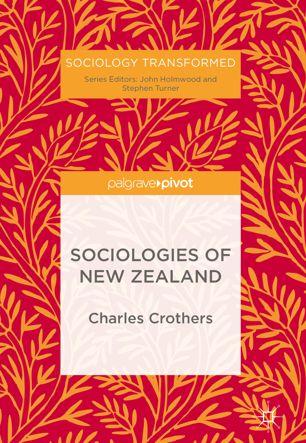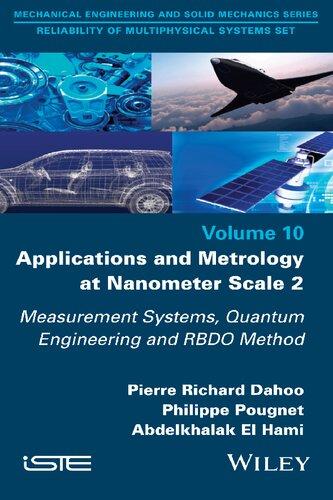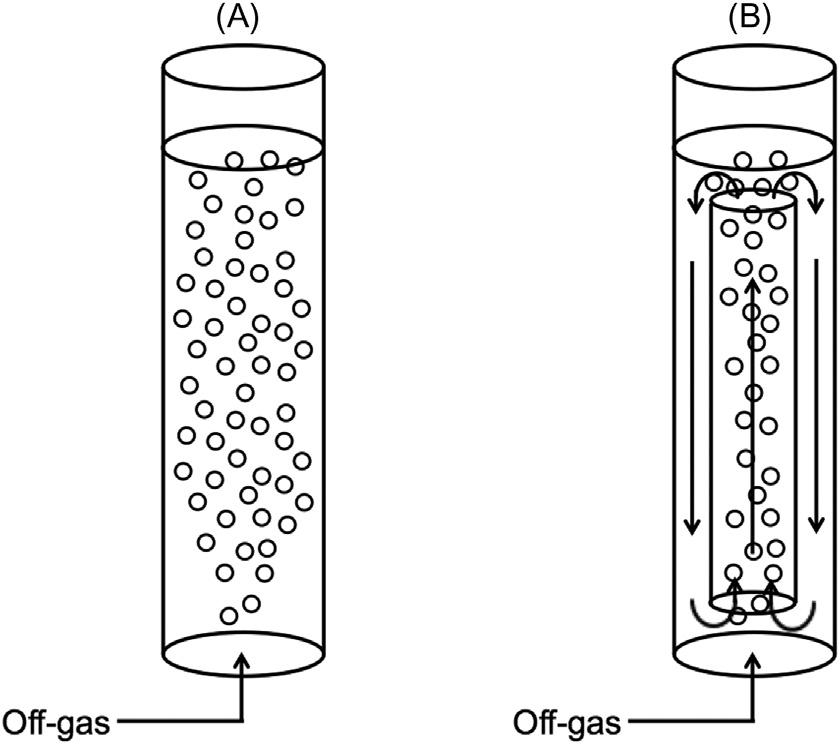Bioreactors:SustainableDesignandIndustrial ApplicationsinMitigationofGhgEmissions1st EditionLakhveerSingh(Editor)
https://ebookmass.com/product/bioreactors-sustainabledesign-and-industrial-applications-in-mitigation-of-ghgemissions-1st-edition-lakhveer-singh-editor/
Instant digital products (PDF, ePub, MOBI) ready for you
Download now and discover formats that fit your needs...
Applications in Design and Simulation of Sustainable Chemical Processes 1st Edition
Dimian A.
https://ebookmass.com/product/applications-in-design-and-simulationof-sustainable-chemical-processes-1st-edition-dimian-a/
ebookmass.com
Innovation in Nano-polysaccharides for Eco-sustainability: From Science to Industrial Applications Preeti Singh
https://ebookmass.com/product/innovation-in-nano-polysaccharides-foreco-sustainability-from-science-to-industrial-applications-preetisingh/
ebookmass.com
Industrial Applications of Nanocrystals Shadpour Mallakpour
https://ebookmass.com/product/industrial-applications-of-nanocrystalsshadpour-mallakpour/
ebookmass.com
Delmar's Standard Textbook of Electricity, 7th Edition
Herman
https://ebookmass.com/product/delmars-standard-textbook-ofelectricity-7th-edition-herman/
ebookmass.com
Hacking Digital: Best Practices to Implement and Accelerate Your Business Transformation Michael Wade
https://ebookmass.com/product/hacking-digital-best-practices-toimplement-and-accelerate-your-business-transformation-michael-wade/
ebookmass.com
Blueberry Truffle Murder (Maple Hills Mystery 3) Wendy Meadows
https://ebookmass.com/product/blueberry-truffle-murder-maple-hillsmystery-3-wendy-meadows/
ebookmass.com
Physics Fifth Edition Robert Coleman Richardson
https://ebookmass.com/product/physics-fifth-edition-robert-colemanrichardson/
ebookmass.com
Precálculo: matemáticas para el cálculo 7th Edition James Stewart
https://ebookmass.com/product/precalculo-matematicas-para-elcalculo-7th-edition-james-stewart/
ebookmass.com
Sociologies of New Zealand 1st ed. Edition Charles Crothers
https://ebookmass.com/product/sociologies-of-new-zealand-1st-ededition-charles-crothers/
ebookmass.com
Applications and Metrology at Nanometer Scale 2: Measurement Systems, Quantum Engineering and RBDO Method, Volume
10 Pierre Richard Dahoo https://ebookmass.com/product/applications-and-metrology-at-nanometerscale-2-measurement-systems-quantum-engineering-and-rbdo-methodvolume-10-pierre-richard-dahoo/
ebookmass.com
Bioreactors Editedby
LAKHVEERSINGH DepartmentofEnvironmentalScience,SRMUniversity, Amaravati,India
ABUYOUSUF DepartmentofChemicalEngineeringandPolymer Science,ShahjalalUniversityofScienceandTechnology, Sylhet,Bangladesh
DURGAMADHABMAHAPATRA TERI-DeakinNanoBiotechnologyCentre,TheEnergy andResourcesInstitute,Gurugram,India DepartmentofBiologicalandEcologicalEngineering, OregonStateUniversity,Corvallis,OR,UnitedStates
Elsevier
Radarweg29,POBox211,1000AEAmsterdam,Netherlands TheBoulevard,LangfordLane,Kidlington,OxfordOX51GB,UnitedKingdom 50HampshireStreet,5thFloor,Cambridge,MA02139,UnitedStates
Copyright©2020ElsevierInc.Allrightsreserved.
Nopartofthispublicationmaybereproducedortransmittedinanyformorbyanymeans,electronicor mechanical,includingphotocopying,recording,oranyinformationstorageandretrievalsystem,without permissioninwritingfromthepublisher.Detailsonhowtoseekpermission,furtherinformationabout thePublisher’spermissionspoliciesandourarrangementswithorganizationssuchastheCopyright ClearanceCenterandtheCopyrightLicensingAgency,canbefoundatourwebsite:. www.elsevier.com/ permissions.
ThisbookandtheindividualcontributionscontainedinitareprotectedundercopyrightbythePublisher (otherthanasmaybenotedherein).
Notices
Knowledgeandbestpracticeinthisfieldareconstantlychanging.Asnewresearchandexperience broadenourunderstanding,changesinresearchmethods,professionalpractices,ormedicaltreatment maybecomenecessary.
Practitionersandresearchersmustalwaysrelyontheirownexperienceandknowledgeinevaluatingand usinganyinformation,methods,compounds,orexperimentsdescribedherein.Inusingsuchinformation ormethodstheyshouldbemindfuloftheirownsafetyandthesafetyofothers,includingpartiesfor whomtheyhaveaprofessionalresponsibility.
Tothefullestextentofthelaw,neitherthePublishernortheauthors,contributors,oreditors,assumeany liabilityforanyinjuryand/ordamagetopersonsorpropertyasamatterofproductsliability,negligence orotherwise,orfromanyuseoroperationofanymethods,products,instructions,orideascontainedin thematerialherein.
BritishLibraryCataloguing-in-PublicationData
AcataloguerecordforthisbookisavailablefromtheBritishLibrary
LibraryofCongressCataloging-in-PublicationData
AcatalogrecordforthisbookisavailablefromtheLibraryofCongress
ISBN:978-0-12-821264-6
ForInformationonallElsevierpublications visitourwebsiteat https://www.elsevier.com/books-and-journals
Publisher: BrianRomer
AcquisitionsEditor: PeterAdamson
EditorialProjectManager: AkehAndrae
ProductionProjectManager: KameshRamajogi
CoverDesigner: GregHarris
TypesetbyMPSLimited,Chennai,India
1.MicroalgaebiofuelbioreactorsformitigationofindustrialCO2 emissions1
CoreyA.LaamanenandJohnA.Scott
1.1 Introduction1
1.2 Microalgae2
1.3 Microalgaegrowthparameters3
1.4 MicroalgaecultivationsystemsforCO2 capture8
1.5 Conclusion13 References14
2.Microbiologyandbiochemistryofanaerobicdigesters:an overview17
SpyridonAchinas,VasileiosAchinasandGerritJanWillemEuverink
2.1 Introduction17
2.2 Anaerobicdigestionsteps18
2.3 Challengesinanaerobicdigestersoperation19
2.4 Microbialecology20
2.5 Microbiologicaldynamics22
2.6 Conclusion23 References24
3.Processintensificationfortheproductionofcanola-basedmethyl esterviaultrasonicbatchreactor:optimizationandkineticstudy27 AwaisBokhari,SuzanaYusup,SairaAsif,LaiFattChuahand LeowZiYanMichelle
3.1 Introduction27
3.2 Feedstocksforbiodieselproduction31
3.3 Currentresearch33
3.4 Materialsandmethodology34
3.5 Resultsanddiscussion34
3.6 Conclusion40 Acknowledgments40 References40 v
4.Conversionofrubberseedoiltobiodieselusingcontinuous ultrasonicreactor43 HuongTrinhandSuzanaYusup
4.1 Introduction43
4.2 Rubberseedoilasfeedstock43
4.3 Ultrasonicmethodinbiodieselproduction44
4.4 Materialandmethodology46
4.5 Resultsanddiscussion49
4.6 Conclusion51 Acknowledgment52 References53
5.Conversionofbiomassintobiofuel:acutting-edgetechnology55 Md.SaifulAlamandMd.SifatTanveer
5.1 Introduction55
5.2 Classificationofbiofuels57
5.3 Barriersofbiofuels71
5.4 Conclusion71 References72
6.Dryfermentersforbiogasproduction75
AbuYousuf,AhasanulKarim,M.AmirulIslam,ShefaUlKarim, Md.MaksudurRahmanKhanandCheKuMohammadFaizal
6.1 Introduction75
6.2 Differentkindsofdryfermentersforbiogasproduction77
6.3 Conclusion85 Acknowledgment85 References85
7.Biogasproductionfromwaste:technicaloverview,progress, andchallenges89 PoojaGhosh,GoldyShah,ShivaliSahota,LakhveerSinghand VirendraKumarVijay
7.1 Introduction89
7.2 Currentstatusofbiogasproduction90
7.3 Availablewastesforbiogasproduction91
7.4 Technologicaladvancementsinbiogasproduction94
7.5 Challengesassociatedwithbiogastechnologydissemination99
7.6 Conclusion100 Acknowledgment100 References100
8.Lifecycleassessmentofwaste-to-bioenergyprocesses:areview105 PoojaGhosh,SubhanjanSengupta,LakhveerSinghandArunadityaSahay
8.1 Introduction105
8.2 Globalwastegenerationscenario106
8.3 Needforwaste-derivedbioenergy107
8.4 Differenttechnologiesforconvertingwaste-to-energy108
8.5 Lifecycleassessmentforwaste-derivedbioenergysystems110
8.6 Keychallengesinlifecycleassessmentstudiesandfuture recommendations117
8.7 Conclusion119
8.8 Acknowledgment119 References119
9.Bioethanolproductionfromlignocellulosicbiomass (waterhyacinth):abiofuelalternative123 SanthanaKrishnan,MohamadFaizalAhmad,NurAzmiraZainuddin, Mohd.FadhilMd.Din,ShahabaldinRezania,ShreeshivadasanChelliapan, ShazwinMatTaib,MohdNasrullahandZularisamAbdulWahid
9.1 Introduction123
9.2 Studybackground124
9.3 Methodology128
9.4 Resultsanddiscussion132
9.5 Conclusion140 Acknowledgments141 References141
10.Workingprincipleoftypicalbioreactors145 P.Jaibiba,S.NagaVigneshandS.Hariharan
10.1 Introduction145
10.2 Aerobicandanaerobicbioreactors146
10.3 Plugflowbioreactor148
10.4 Upflowanaerobicsludgeblanketbioreactor150
10.5 Photobioreactor153
10.6 Reversemembranebioreactor157
10.7 Immersedmembranebioreactor158
10.8 Fluidizedbedbioreactor161
10.9 Packedbedbioreactor162
10.10 Activatedsludgebioreactor163
10.11 Membranebioreactor165
10.12 Immobilizedcellbioreactor167
10.13 Futureperspective169
10.14 Conclusion170 Acknowledgment170 References171
11.Anaerobictreatmentofmunicipalsolidwastelandfill leachate175
ShreeshivadasanChelliapan,NithiyaArumugam,Mohd.FadhilMd.Din, HesamKamyabandShirinShafieiEbrahimi
11.1 Introduction175
11.2 Municipalsolidwastemanagement176
11.3 Landfill176
11.4 Overviewonlandfillprocessing178
11.5 Landfillleachate179
11.6 Leachatecharacterization179
11.7 Treatmentoflandfillleachate181
11.8 Anaerobictreatmentofleachate182
11.9 Conclusion190 Acknowledgments190 References190
12.Advancementsinhydrothermalliquefactionreactors:overview andprospects195
S.N.Sahu,N.K.Sahoo,S.N.NaikandD.M.Mahapatra
12.1 Introduction195
12.2 Backgroundonhydrothermalliquefaction196
12.3 Hydrothermalliquefactionbiomassfeedstocks200
12.4 Conclusion208 References209
13.Anoverviewofalgalphotobioreactorsforresourcerecovery fromwaste215
SurjithRamasamy,S.ArunandKannanPakshirajan
13.1 Introduction215
13.2 Photobioreactorsusedforalgalcultivation217
13.3 Controlsystemsandtheirstrategiesinphotobioreactors227
13.4 Speciestransportmodelsforbubblemovement230
13.5 Lightintensityanddistributioninphotobioreactors233
13.6 Kineticsofmixinginairliftandbubblereactors242
13.7 Conclusion244 References244
14.Anoverviewofbioreactorconfigurationsandoperational strategiesfordarkfermentativebiohydrogenproduction249 ArindamSinharoy,ManojKumarandKannanPakshirajan
14.1 Introduction249
14.2 Bioreactorsforhydrogenfermentation252
14.3 Conclusion283
References283
15.Bioreactorforalgaecultivationandbiodieselproduction289 RashmiChandra,GarimaVishal,CarlosEduardoGámezSánchezand JanetAlejandraGutiérrezUribe
15.1 Introduction289
15.2 Algalproductandchemistryofbiosynthesis290
15.3 Cultivationbioreactorssystems291
15.4 Methodsformicroalgaebiodieselextraction295
15.5 Osmoticpressure302
15.6 Pulsedelectricfieldtechnologies302
15.7 Photobioreactorinpresentscenarios302
15.8 Conclusion303
Acknowledgments304 References304
309
Listofcontributors SpyridonAchinas
FacultyofScienceandEngineering,UniversityofGroningen,Groningen,The Netherlands
VasileiosAchinas
InstituteforLifeScienceandTechnology,HanzeUniversityofAppliedSciences, Groningen,TheNetherlands
MohamadFaizalAhmad
CentreforEnvironmentalSustainabilityandWaterSecurity(IPASA),ResearchInstitute ofSustainableEnvironment(RISE),SchoolofCivilEngineering,FacultyofEngineering, UniversitiTeknologiMalaysia(UTM),Skudai,Johor,Malaysia;SchoolofCivil Engineering,FacultyofEngineering,UniversitiTeknologiMalaysia,Skudai,Malaysia
Md.SaifulAlam
DepartmentofPetroleum&MiningEngineering,ShahjalalUniversityofScienceand Technology,Sylhet,Bangladesh
NithiyaArumugam
DepartmentofEngineering&Technology,RazakFacultyofTechnologyand Informatics,UniversitiTeknologiMalaysia,KualaLumpur,Malaysia
S.Arun
DepartmentofBiosciencesandBioengineering,IndianInstituteofTechnologyGuwahati, Guwahati,India
SairaAsif
DepartmentofBotany,PMASAridAgricultureUniversity,Rawalpindi,Pakistan
AwaisBokhari
DepartmentofChemicalEngineering,BiomassProcessingCluster,HICOE-Centrefor BiofuelandBiochemicalResearch,InstituteofSelf-SustainableBuilding,Universiti TeknologiPETRONAS,SeriIskandar,Perak,Malaysia;ChemicalEngineering Department,BiomassConversionResearchCenter(BCRC),COMSATSUniversity Islamabad(CUI),Lahore,Pakistan
RashmiChandra
TecnologicodeMonterrey,SchoolofEngineeringandScience,Toluca,Mexico
ShreeshivadasanChelliapan
DepartmentofEngineering&Technology,RazakFacultyofTechnologyand Informatics,UniversitiTeknologiMalaysia,KualaLumpur,Malaysia
LaiFattChuah
MalaysiaMarineDepartmentNorthernRegion,Gelugor,Penang,Malaysia
Mohd.FadhilMd.Din
CentreforEnvironmentalSustainabilityandWaterSecurity(IPASA),ResearchInstitute ofSustainableEnvironment(RISE),SchoolofCivilEngineering,FacultyofEngineering, UniversitiTeknologiMalaysia(UTM),Skudai,Johor,Malaysia;SchoolofCivil Engineering,FacultyofEngineering,UniversitiTeknologiMalaysia,Skudai,Malaysia
ShirinShafieiEbrahimi
SchoolofEducation,UniversitiTeknologiMalaysia,JohorBahru,Malaysia
GerritJanWillemEuverink
FacultyofScienceandEngineering,UniversityofGroningen,Groningen,The Netherlands
CheKuMohammadFaizal
FacultyofEngineeringTechnology,UniversitiMalaysiaPahang,Pahang,Malaysia
PoojaGhosh
CentreforRuralDevelopmentandTechnology,IndianInstituteofTechnology,New Delhi,India
S.Hariharan
DepartmentofBiotechnology,SriVenkateswaraCollegeofEngineering,Sriperumbudur, India
M.AmirulIslam
FacultyofChemicalandNaturalResourceEngineering,UniversitiMalaysiaPahang, Pahang,Malaysia
P.Jaibiba
DepartmentofBiotechnology,SriVenkateswaraCollegeofEngineering,Sriperumbudur, India
HesamKamyab
DepartmentofEngineering&Technology,RazakFacultyofTechnologyand Informatics,UniversitiTeknologiMalaysia,KualaLumpur,Malaysia
AhasanulKarim
FacultyofEngineeringTechnology,UniversitiMalaysiaPahang,Pahang,Malaysia
ShefaUlKarim
DepartmentofGeologicalSciences,ChiangMaiUniversity,ChiangMai,Thailand
Md.MaksudurRahmanKhan
FacultyofChemicalandNaturalResourceEngineering,UniversitiMalaysiaPahang, Pahang,Malaysia
SanthanaKrishnan
CentreforEnvironmentalSustainabilityandWaterSecurity(IPASA),ResearchInstitute ofSustainableEnvironment(RISE),SchoolofCivilEngineering,FacultyofEngineering, UniversitiTeknologiMalaysia(UTM),Skudai,Johor,Malaysia;SchoolofCivil Engineering,FacultyofEngineering,UniversitiTeknologiMalaysia,Skudai,Malaysia
ManojKumar
DepartmentofBiosciencesandBioengineering,IndianInstituteofTechnologyGuwahati, Guwahati,India
CoreyA.Laamanen
BhartiSchoolofEngineering,LaurentianUniversity,Sudbury,ON,Canada
D.M.Mahapatra
Biological&EcologicalEngineering,OregonStateUniversity,Corvallis,OR,United States
LeowZiYanMichelle
DepartmentofChemicalEngineering,BiomassProcessingCluster,HICOE-Centrefor BiofuelandBiochemicalResearch,InstituteofSelf-SustainableBuilding,Universiti TeknologiPETRONAS,SeriIskandar,Perak,Malaysia
S.NagaVignesh
DepartmentofBiotechnology,SriVenkateswaraCollegeofEngineering,Sriperumbudur, India
S.N.Naik
CentreforRuralDevelopmentandTechnology,IndianInstituteofTechnologyDelhi, NewDelhi,India
MohdNasrullah
FacultyofCivilEngineeringTechnology,UniversitiMalaysiaPahang,Kuantan,Malaysia
KannanPakshirajan
DepartmentofBiosciencesandBioengineering,IndianInstituteofTechnologyGuwahati, Guwahati,India
SurjithRamasamy
DepartmentofBiosciencesandBioengineering,IndianInstituteofTechnologyGuwahati, Guwahati,India
ShahabaldinRezania
CentreforEnvironmentalSustainabilityandWaterSecurity(IPASA),ResearchInstitute ofSustainableEnvironment(RISE),SchoolofCivilEngineering,FacultyofEngineering, UniversitiTeknologiMalaysia(UTM),Skudai,Johor,Malaysia;SchoolofCivil Engineering,FacultyofEngineering,UniversitiTeknologiMalaysia,Skudai,Malaysia
ArunadityaSahay
BirlaInstituteofManagementTechnology,GreaterNoida,India
N.K.Sahoo
CentreforRuralDevelopmentandTechnology,IndianInstituteofTechnologyDelhi, NewDelhi,India
ShivaliSahota
CentreforRuralDevelopmentandTechnology,IndianInstituteofTechnology,New Delhi,India
S.N.Sahu
CentreforRuralDevelopmentandTechnology,IndianInstituteofTechnologyDelhi, NewDelhi,India
CarlosEduardoGámezSánchez
TecnologicodeMonterrey,SchoolofEngineeringandScience,Toluca,Mexico
JohnA.Scott
BhartiSchoolofEngineering,LaurentianUniversity,Sudbury,ON,Canada
SubhanjanSengupta
BirlaInstituteofManagementTechnology,GreaterNoida,India
GoldyShah
CentreforRuralDevelopmentandTechnology,IndianInstituteofTechnology,New Delhi,India
LakhveerSingh
FacultyofCivilandEnvironmentalEngineering,UniversityMalaysiaPahang,Kuantan, Malaysia
ArindamSinharoy
DepartmentofBiosciencesandBioengineering,IndianInstituteofTechnologyGuwahati, Guwahati,India
ShazwinMatTaib
CenterforCoastalandOceanEngineering,ResearchInstituteforSustainable Environment,UniversitiTeknologiMalaysia,KualaLumpur,Malaysia
Md.SifatTanveer
DepartmentofPetroleum&MiningEngineering,ShahjalalUniversityofScienceand Technology,Sylhet,Bangladesh
HuongTrinh
ChemicalEngineeringDepartment,UniversitiTeknologiPETRONAS,Ipoh,Malaysia
JanetAlejandraGutiérrezUribe
TecnologicodeMonterrey,SchoolofEngineeringandScience,Puebla,Mexico
VirendraKumarVijay
CentreforRuralDevelopmentandTechnology,IndianInstituteofTechnology,New Delhi,India
GarimaVishal
DepartmentofChemicalEngineering,IndianInstituteofTechnology,NewDelhi,India
ZularisamAbdulWahid
FacultyofCivilEngineeringTechnology,UniversitiMalaysiaPahang,Kuantan,Malaysia
AbuYousuf
DepartmentofChemicalEngineeringandPolymerScience,ShahjalalUniversityof ScienceandTechnology,Sylhet,Bangladesh
SuzanaYusup
ChemicalEngineeringDepartment,UniversitiTeknologiPETRONAS,Ipoh,Malaysia; DepartmentofChemicalEngineering,BiomassProcessingCluster,HICOE-Centrefor BiofuelandBiochemicalResearch,InstituteofSelf-SustainableBuilding,Universiti TeknologiPETRONAS,SeriIskandar,Perak,Malaysia
NurAzmiraZainuddin
CentreforEnvironmentalSustainabilityandWaterSecurity(IPASA),ResearchInstitute ofSustainableEnvironment(RISE),SchoolofCivilEngineering,FacultyofEngineering, UniversitiTeknologiMalaysia(UTM),Skudai,Johor,Malaysia;SchoolofCivil Engineering,FacultyofEngineering,UniversitiTeknologiMalaysia,Skudai,Malaysia
CHAPTER1 Microalgaebiofuelbioreactors formitigationofindustrialCO2 emissions CoreyA.LaamanenandJohnA.Scott BhartiSchoolofEngineering,LaurentianUniversity,Sudbury,ON,Canada
1.1Introduction Therelianceonfossilfuelscontinuestobeanunsustainableoptiondueto thedepletionofreservesandtheproductionofgreenhousegases,inparticularcarbondioxide(CO2),releasedbytheircombustion.Thishasled toasignificantinterestinrenewable,sustainableenergysources,oneof whichisbiofuels.
Biofuelsourceshavebeenextensivelyresearchedforthepastseveral decades,andtheirproductioncanbedividedintothreegenerations, namelyfoodcrops,energycrops,andmicroalgae [1].Thefirstgeneration isbasedonfoodcropssuchascornbeingdivertedintoenergy.Inlightof thefoodversusfueldebate,thesecondgenerationtransitionedintothe growthofdedicatedenergycropssuchas Jatropha.Whilethismarkeda stepchangeinarealenergyproduction(from172L/haforcornto 1892L/ha) [2],arablelandwasstillrequiredtogrownonfoodcrops.To moveawayfromarablelandrequirements,aquaculturerepresentsthe thirdgenerationofbiofuels.Thisincludesthecultivationofphototrophic microalgae,whichuseCO2 astheircarbonsource.Usingmicroalgaeto producebiodieselrepresentsanotherorderofmagnitudeincreaseinareal energyproduction(58,700L/haformicroalgaeat30%oilbyweight) [2].
Fortheproductionofbiodiesel,microalgaecellsareselectedthataccumulatebetween15%and85%lipidcontent.Theselipids(triglycerides) canbedirectlyconvertedintofattyacidmethylesters(biodiesel)through atransesterificationreaction.Thetriglyceridesarereactedwithmethanol inthepresenceofacatalyst(typicallysulfuricacid)toproduceglycerol andbiodiesel.Transesterificationcanbeshownas:
CH2–OCOR1
CH–OCOR2
CH2–OCOR3
Triglyceride (Lipids) 3HOCH3
R1–COOCH3
R2–COOCH3
R3–COOCH3
Methylesters (Biodiesel) + +
ð1:1Þ
Phototrophicmicroalgae,inadditiontonotrequiringarableland, growfasterandareabletocapturemoreCO2 perunitareathanterrestrial plants [3].ThecaptureofanthropogenicCO2 canbefurtherenhancedby passingthroughaqueousmediumindustrialoff-gasesthathaveanelevated CO2 content.Thatis,industrialCO2 canbemitigatedbymicroalgae usingitastheircarbonsource [4].Asithasbeenshown,microalgalbiomassisapproximately50%carbon [3],whichtranslatesto:
Thatis,foreverygram(dryweight)ofmicroalgae,1.83gofCO2 is takenup.Theconceptofcarboncaptureusingmicroalgaeandsubsequent biofuel(biodiesel)productionisshownin Fig.1.1.
1.2Microalgae Microalgaecanbebiologicallyclassifiedassingle-celledplantsthataccumulatedifferentproductsasaresponsetotheirenvironmentalconditions, whichiscentraltobiodieselproduction.Throughthecontroloftheprocessparametersandtheselectionofmicroalgaestrains,theoutcomecan beaimedtowardtheproductionoflipids,whicharecellularenergystoragecompounds [5].Microalgalcellscanaccumulatelipidstoupto85% oftotalcelldryweight [6]
Figure1.1 Carbondioxide(CO2)captureandbiofuelproductionusingmicroalgae.
Tobeabletobestutilizedifferentmetabolicpathwaysatwo-stage cultivationstrategyisoftenutilized,thephotosyntheticproductionofbiomassandtheaccumulationoflipids.Inthefirststage,idealgrowthconditionsareprovidedtoallowfortheproductionofmicroalgalbiomass.For anymicroalgalstrain,theseidealconditionswillberelatedtopH,temperature,andCO2 andnutrientlevels.Asecondstagewillthenbeusedto applystressbychangingoneormoreoftheseconditions,therebytriggeringtheaccumulationoflipids [5].
Anotherbenefitofmicroalgaecultivationfortheproductionofbiofuelsisthatthebiomassremainingafterlipidextractioncanalsobeofsignificantvalue.Thisbiomasshasbeenexaminedforhumandietary benefits,aproteinsourceforfishfarmsorlivestock,cosmetics,fertilizers, pharmaceuticals,andnutraceuticals [7 11].Whilebiofuelisarelatively low-valuebulkproduct,additionalhighvaluecoproductscanprovidethe economicbenefittomaketheentireoperationprofitable.
1.3Microalgaegrowthparameters Microalgaegrowthdependsonanumberofdifferentparametersforthe operationincludingtheavailabilityofnutrients(inparticularthemacronutrientsnitrogenandphosphorus),theconcentrationofdissolvedCO2, pH,lightintensityandphotoperiod,andtemperature.Thetypicalranges foroperationsare15°C 30°C,apHvaluebetween4and11,andlight intensitiesof1000 10,000lux [12].Thesecanbemodifiedtopromote biomassproduction,ortomoveawayfromidealgrowthconditionsin ordertotriggerotherpathwaysthatleadtotheaccumulationoflipidsfor biodieselproduction [13].
1.3.1Light Microalgaeuselightastheirsourceofenergy,andboththeintensityand duration(photoperiod)mustbeoptimized.Iftheintensityisabovethe saturationlimit(around6500lux) [14],thenphotoinhibitioncanoccur, whichreducestheefficiencyofthesystem [15].Wahidinetal. [14] found thatfora Nannochloropsis sp.,boththelightintensityandphotoperiod neededtobeoptimized,ratherthanmaximized,toachievethebest growthrate.
Microalgaecanonlyutilizewavelengthsbetween400and700nm, whichaccountsforabout50%ofsunlight.Thislimitstheirpotentialphotosyntheticefficiency,whichisfurtherreducedthroughreflectionand
cellularrespiration [15].Onacellularbasis,themaximumphotoconversionefficiencythatlightisusedforphotosynthesisandbiomassproduction isapproximately9% [16].Thisrepresents,however,asignificantincrease comparedtoterrestrialplants,whichhavemaximumsinthe4.6% 6.0% range [16]
Lightdelivery,intensity,spectra,photoperiods,thefrequencyoflight/ darkcycles,andtheamountoflightexposedsurfaceareahaveallbeen reportedtohaveasignificantimpactonmicroalgalbiomassformation. Lightcharacteristicshavealsobeenshowntoinfluencethelipidcontent ofmicroalgalcells,aswellastheproductionofcarbohydrates,proteins, andothercellularcomponents [17].
Toprovidelight,itisidealtoutilizeonlysunlight,asthisreducesthe capital,maintenance,andenergycostsassociatedwithartificiallightingsystems.This,however,limitsthedepthorlengthofthelightpathforsystems, duetomicroalgalself-shadingasbiomassconcentrationsincrease [18,19].
Withrespecttoartificiallighting,assumingacultureislitovera 3-weekcyclefor18haday [14],thenforevery100Woflightsupplied andwitha100%efficientlightbulb,theamountofenergyusedis:
Basedontheaboveenergyrequirement,withabiomasscomposedof 25%lipid,abiodieselenergydensityof37.8MJ/kg,anda90%conversionrateoflipidstobiodiesel [20],theamountofbiomass(dryweight) requiredtobreakevenwouldbe:
Thatis,overa3-weekcycle,theadditionof100Woflightingwould requireanadditional16kgofmicroalgaetobreakevenonanenergy balance.
Theaboveexamplehighlightsamajorissuewithtraditionalindoor andartificiallylitbioreactorsformicroalgae.Bymovingaproductionsystemoutdoors,whilstlosingtheabilitytoexactlycontroltemperature,by utilizingsunlightandavoidingheatingcosts,overallelectricityconsumptioncanbereducedby90% [20].Toovercomeself-shadingwhenutilizingonlysunlight,microalgalculturescanbecontinuallyvertically
circulated,resultinginindividualmicroalgaecellscyclingbetweenlight anddarkareas [21].
Inmovestowardutilizingsunlightexclusivelyinbioreactors,workis beingdoneonincreasingtheefficiencyoftheirutilization.Thislargely involvesdifferentcaptureanddistributionmechanismssuchasfiberoptics orlightguides [17].Sunetal. [22] used3cmlonghollowhorizontal tubesonaflatplatereactor,whichledtoa23%increaseinbiomassproductivity.Morecomplexdesignshaveincludedtheuseoflensestofocus sunlightintoadistributionsystem [23].However,ascomplexityincreases sodocapitalandmaintenancecosts.Furthermore,anyadditionalcomponentsaddedtoabioreactor,especiallyforthedistributionoflight,runthe riskofaccumulatingsurfacebiofilmsthatreduceefficiency.Thedesignof lighttransmittingdevicesmust,therefore,considerpreventingbiofouling toavoidfrequentmaintenance [9].
Anapproachforavoidingtheaccumulationofbiofilmsistheuseof simpledesignssuchaslighttubes [17].Lighttubesareverticaltubescontainingwaterthatareinsertedintotheculturesolution.Astheinteriorof thetubedoesnotcontainmicroalgae,itprovidesapathforsunlightto passintotheculturemedium.Byprovidinglightdeeperintothesystem, theuseofthesetubeshasresultedina33.6%increaseinbiomassproduction [17].Theyarealsoideallylocatedabovegasspargersthatbubblein off-gasCO2,withrisinggasbubbles “scrubbing” thelighttubesurfaces.
Tofurtherincreasetheireffectiveness,lighttubescouldalsobecombinedwithothersunlightfocusingsystemssuchasthelensesdescribedin Ref. [23].Low-costsolutionsforimprovingtheutilizationofsunlight, andtherebyincreasingbioreactorperformance,holdsignificantpromise formoreeconomicproductionofalgalbiofuelandotherproducts.
1.3.2Nutrients Aknownlimitationinthelarge-scaleproductionofbiofuelsisalackof sustainablesourcesoflow-costnutrients,butrelativelylittleresearchhas beendoneregardingthisissue.
Atthelaboratoryscale,mostexperimentsgivenutrientsinexcessto promotemicroalgaegrowth,reducingthemonlytoinducestressinorder totriggerlipidaccumulation.Seyedetal. [13] didnot,however,finda significanteffectfromvaryingmediaconcentrations.Thisisinaccordance withresultsfrom [24],whichshowed,withtheexceptionofpotassium phosphate,nosignificantchangeswhendiluting3N-BoldBasalmedium
sixfold.Thissuggeststhatprojectionsfornutrientcostforlarge-scale productioncouldbetoohigh,andiftoomanynutrientsareprovided, theeconomicsoftheoperationcouldbenegativelyimpacted.
Toeconomicallyprovidemicroalgalmacronutrients,namelynitrogen andphosphorus,awidelyproposedsolutionistoadaptcurrentmicroalgal systemsusedtotreatmunicipalorindustrialwastewaterstoremovethese nutrients.ThecombinationofwastewaternutrientremovalandCO2 capturefromindustrialoff-gasesisapromisingapproach,therefore,for microalgalbiofuelproduction.Thisroutecouldpotentiallyreducemicroalgalproductioncosts,asithasbeenestimatedthatnutrients,water,and CO2 contributeto10% 30%ofthetotalproductioncostsofcommercial microalgaecultivation [25].
1.3.3Carbondioxide Microalgaearephotosyntheticmicroorganismsthatutilizelightenergyto capturecarbonfromCO2 andreleaseoxygenasaby-product.Thisoxygenby-productisimportantinthedesignofbioreactors,ashighconcentrationsofdissolvedoxygen(DO)cantriggerphotorespiration(where oxygenisconsumedandCO2 isreleased),andhighDOconcentrations canbetoxictomicroalgae [15]
CarboncapturebymicroalgaereliesonatmosphericCO2 (approximately380ppmv)dissolvingintowater,butthiscanbeenhancedthrough theuseofindustrialoff-gas.TheuseofatmosphericCO2 alonelimitsbiomassproductivityduetoitslowconcentrationandthehighsurfacetensionofwater [26].Thereforethedirectapplicationofindustrialoff-gas containingelevatedlevelsofCO2 isapromisingstrategytopromote greatergasmasstransferintotheculturemediumandimprovedbiomass productivity.However,toachievethenecessarymasstransferintotheliquid,anappropriatesurfaceareaandresidencetimemustbeprovided.
Toenhancethesurfaceareaformasstransfer,thegasiscommonly spargedintothemediumtoproducefinebubbles.Foragivengasflow rate,thesmallerthebubblesthegreaterthesurfaceareaperunitgasbubblevolume.Toachievethisgoal,workhasbeendoneonfluidicoscillationtodecreasethebubblesizesoutofasparger,therebyincreasingmass transferrates [26].
Thegasresidencetimeisafunctionofthelengthofthebubblepath throughtheculturemedium.Forexistingcommercialopenpondsystems, thisrelatestothedepth,whichistypicallylimitedduetoself-shadingto
15 35cm [27].Thismeansthatthebubbleresidencewillbeshortand themasstransferwillbelow.Thisresultsinan80% 90%lossofCO2 to theatmospherefromopenpondsystems [28].
Thereareseveralindustrialprocessesthatemitsignificantamountsof CO2 includingnaturalgascombustion(9%CO2 [29]),fossilfuelpower plants(5% 15% [30,31]),steelandironproduction(30% [29]),cement production(15% 25% [32,33]),smelterfurnaces(6% 7% [4]),andwaste incineration(11% [34]).
Theseoff-gassescanbeutilizedasacarbonsourceformicroalgae growth,buttheycanalsocontaincomponentsthatarenotnecessarily beneficialtomicroalgae.Theseincludeacidgassessuchassulfurdioxide (SO2)andnitrogenoxides(NOx),whichreducethepHofculturemedia. Despitethis,manyreportedexperimentshavebeencarriedoutusingsimulatedoff-gas,whichisonlyairmixedwithCO2.Whilstlowconcentrations,intherangeof100ppmNOx andSO2,maynotaffectmicroalgae growth [34,35],itisneverthelessimportanttoconsiderthemandhow theymayaffectmicroalgalcultures.
1.3.4Temperature Thetemperaturerangesforthemajorityofmicroalgaestrainsusedfor biodieselproductionis15°C 30°C [36],whichhaslimitedoutdoorproductionintropicandsubtropicareasworldwide.Warmregionsareoften onesinwhichfreshwaterislimited,andasaconsequencemicroalgaeproductionmayberestrictedtosalt(sea)waterspecies.However,themajorityofworldwideregionsfallbelow15°Cforaportionoftheyear.
Inhotclimates,ithasbeenshownth atoutdoorbioreactortemperaturescanreach10°C 30°Cabovetheambienttemperature [15] .To mitigateanylossofproductivity,thereisneedforcoolingsuchasis achievedbysubmergingtheentirebioreactorinawaterpool,spraying thebioreactorsurfacewithwater,shadingthesurface,orusingaheat exchanger.Usingwatertocoolbioreactorsystemsaddssignificantadditionalpumpingcosts,whilstshad ingdecreasestheamountofsolar energyavailableforbiomassproduction [15] .Incoldclimates,the reverseissueispresentastemperaturesfallbelowtheoptimalrange, therebyrequiringheating.Temperatureissuescanbeaddressedbymovingoperationsindoors,butbuildingsizecansignificantlyreducethe productionvolume,andincreasedoperationalcostscanarisefromfactors suchasartificiallighting.
Manyindustriesthatproduceoff-gassesdo,however,producelarge amountsofwasteheat.Ithasbeenproposedforasmelter,thatanintegratedsystemcoulduseCO2 inthefurnaceoff-gas [37],andwasteheat fromtheroasteroff-gas [4,38]. Thecaptureofwasteheatprovidesa potentialsolutiontoexpandingoutdoorcultivationintocoldclimates.
1.4MicroalgaecultivationsystemsforCO2 capture Currentlarge-scaleoperationsmainlyutilizeshallow(30 50cm)open pondsystemsduetotheirrelativelylowcost.Studieshaveshownthat bothtemperatureandcontaminationhaveasignificantinfluenceoverthe productivityofopenpondsystems [39].Thesesystemsalsoprovidelimitedcontrolinthemaintenanceofmicroalgaespecies(e.g.,avoidanceof invasivespecies)andproducelowfinalbiomassconcentrations [16],which makesdownstreamprocessing(theseparationofbiomassfromtheliquid medium)expensive.Furthermore,duetotheshortresidencetimeofany sparged-inindustrialoff-gas,CO2 adsorptionwillbelow.Thereforeother typesofbioreactorshavebeenexaminedforthecaptureofCO2 emissions andthesubsequentproductionofmicroalgalbiofuel.
SinghandSharma [9] listedseveralrequirementsforamicroalgalbioreactorthatimprovesontheperformanceofshallowopenponds:
• minimizedcontaminationtoallowforasinglestrainculture;
• increasedcontroloverprocessconditions(e.g.,pH,light,temperature, andCO2 concentration);
• reducedCO2 losses;
• reducedwaterevaporativelosses;
• increasedmicroalgalcellconcentrations;and
• allowancefortheproductionofbiopharmaceuticalsandotherspecialty chemicals.
Themajortrade-offisbetweenimprovedconditionsandtheresulting increaseinoperationalcostsduelargelytotheincreasedcomplexityleadingtogreaterconstructionandmaintenancecosts,aswellasauxiliary energyneeds [16].Thesecostscanbereducedthroughtheoptimization ofbioreactorgeometry,orientation,andtheutilizationofavailable resourcessuchaswasteheat.
Inconsiderationofbioreactordesign,severalareasshouldbeoptimized toachievemaximizedbiomassandbiofuelproductionincluding [15]:
• harvestingasmuchsunlightaspossibleandefficientlydistributingitto allowbiomassformation;
• convenientandprecisecontrolofoperationalparameters;
• minimizingcapitalandoperationalcosts;and
• minimizingenergyconsumption.
Numeroustypesofbioreactorshavebeendevelopedincludingvertical column(airliftandbubblecolumn),flatplate,andhorizontaltubularbioreactors.However,nosingletypeofbioreactorsatisfiesallofthenecessary requirementsofanidealbioreactor [25].
Oneapproachistoemployahybridsystem,thatis,asystemthathas thecharacteristicsofbothanopenpondandabioreactor.Thesimplestof theseisanopenpondthatiscoveredtoprovideacontainedgaseousspace abovetheculturesurface.Thisallowsfortheincreasedcapture(adsorption)ofCO2,thereductionofcontamination,andanincreasedabilityto controlcultureconditions [25].Anotherexampleistheuseofdeeper ponds [21],therebyincreasingtheoff-gasresidencetime,whichcanbe achievedusingagas-liftsystemtopromoteculturecirculation.
Bioreactorscanberuninbatch(discontinuous),fed-batch,semicontinuous,orcontinuousmodes.Mostcommon,duetothetimerequirementsforgrowingmicroalgaetoadesiredbiomasslevel,arebatchor fed-batchsystems.Theseallowforasimpleoperation,butarenot necessarilyfullyefficient.Whereasacontinuoussystem,inwhichsomeof thecultureiscontinuouslybled-offandprocessed,providesmanybenefits. Theseincludeaconstantproductstream,easyautomation,andtheability tokeepthesystematitsmostproductive.Continuousoperationcan allowforbettervolumetricproductivitiesovertime,butasmostarethe resultoflaboratorystudies,significantworkstillneedstobedoneto translateresearchoutcomesintofull-scaleoperations [12]
ForanyCO2 capturesystem,theconfigurationandoperationalmode ofthebioreactorfundamentallydeterminethesystem’sperformance. Thesefactorscontributetotheoperationalcostsofthereactorfrom energyconsumptionforanyappliedlightingtoachievingmixingandgas sparging.Thisauxiliaryenergymustbeconsideredinthedesignasit directlyaffectsthenetenergyreturnoftheoperation.Forbubbleplates andairliftreactors,theenergyinputsareintherangeof50 70W/m3, whileforahorizontaltubularreactoritcanbenearly2000W/m3 [16]
Thedirectapplicationofoff-gas(bubblingin)totheculturemedium inaverticalcolumnislikelytoprovidethebestcapturerateofCO2. However,therelativelysmalltopsurface-to-volumeratioreducesoverall solarenergycapture,therebylimitingmaximumpotentialgrowthrates (albeitreducingtheriskofphotoinhibition).Itisimportant,therefore,to
obtainmixingfromthebubbledinoff-gasinordertoprovideaneven distributionofmicroalgaeandtopromotetheirexposuretolightthrough circulatingthemfromthebottomtothetop.Providinglight darkexposurecyclescanimprovephotosyntheticefficiency [13,25].Furthermore, off-gasbubblescanhelpremoveoxygenfromthemediumproducedduringphotosynthesisandtoavoidaccumulationissues [9].
Columnbioreactorscanbedividedintotwosimilaroperations, namelybubbleandgas-liftcolumns(Fig.1.2).
Inbothoperations,industrialoff-gascouldbeinjectedintothebottom ofthecolumnandallowedtobubbleupthroughthemicroalgalmedium. ThisprovidesanoptimumresidencetimeforCO2 masstransferandvaryingdegreesofmixing.Themaindifferencebetweenthetwotypesisthat withagas-lift,thegasbubblesascendthroughariser(averticaltube abovethegassparger),someofwhichcanthenbeentrainedintheflow backdownthedowncomer(Fig.1.2).Gas-liftsystems,therefore,provide moreeffectivesolutionmixingandmasstransfer [7,13].Bubblerisingand circulationinbothtypesofcolumnbioreactorneedtobegentleenough thattheshearcreatedcausesnocelldamage [15].Atableofresultsfrom variouscolumnbioreactorsisgivenin Table1.1.
Zimmermanetal. [26] usedfluidicoscillationtomakesmallerbubbles inanairliftcolumnoperationconnecteddirectlytosteelplantexhaustgas (B20%CO2 andunmeasuredquantitiesofNOx andSOx).Theresults showedacarboncaptureratefor Dunaliella salina of0.1g/L/day,withno
Figure1.2 (A)Bubblecolumnand(B)gas-liftsystems.
Table1.1 ColumnbioreactorresultsusedforCO2 capture.
MicroalgaestrainReactorCO2 sourceCO2
Dunaliellasalina (culturecollection)AirliftSteelplantoff-gas200.1 [26]
Spirulina sp.(culturecollection)BubblecolumnSynthetic120.27 [40]
Scenedesmusobliquus (bioprospected)BubblecolumnSynthetic120.22 [40]
Chlorella sp.MTF-15(bioprospected)BubblecolumnSteelplantoff-gas24 260.942(calculated) [41]
Chlorella sp.MTF-15(bioprospected)BubblecolumnSteelplantoff-gas12 13 (50%diluted) 0.966(calculated) [41]
Scenedesmus sp.(culturecollection)AirliftSynthetic60.110(calculated) [21]
Chlorella sp.(culturecollection)BubblecolumnSynthetic100.249 [42]
Chlorella sp.(culturecollection)BubblecolumnCokeoven10 150.175 [42]
inhibitionduetothepresenceofNOx orSO2.Itshouldbenoted, however,thattheuseofbubblecolumns,especiallywithsmallbubbles, whilstincreasingsurfaceareaforcarboncapture,canlimitlightcapture effectivenessduetobubblereflection [43]
Differentsourcesofoff-gasfromsteelplants(24% 26%)wereexaminedbyKaoetal. [41].Cokeovenoff-gasshowedparticularlypromising results.Using Chlorella sp.MTF-15inabubblecolumn,acapturerateof 0.942g/L/daywascalculated.Thecapturerateincreasedto0.966g/L/ daywhenusinghalfconcentrationcokeovenfluegas,whichwasinline withthemorecommonlytestedCO2 percentageusedformicroalgae cultivation.
Moraisetal. [40] utilizedathree-stagesequentialbubblecolumnusing syntheticcoalcombustionoff-gas(12%CO2)toincreasecarboncapture efficiency.Theresultsshowedacapturerateof0.27g/L/dayforaspecies of Spirulina sp.and0.22g/L/dayusingastrainof Spirulinaobliquus thatwas isolatedfromnearacoalpowerstation.Interestingly,theisolated S.obliquus strain,whenexposedtoNOandSO2 (upto100ppmand60ppm,respectively),showednosignificanteffectregardingcarboncapture.
Leeetal. [44],using2% 4%CO2 andfourbubblecolumnsinseries with Haematococcuspluvialis,sawa3.63-foldincreaseincaptureefficiency (upto49.37%)ascomparedtoasinglecolumn.Chengetal. [45] useda 14-stagesequentialbubblecolumnsystem,andwithasyntheticoff-gas (15%CO2),obtainedacaptureefficiencyof85.6%.However,theexperimentalresultsmaybeoflimitedvalueintermsofuseinscaling-uptoa full-sizedsystem,astheywereobtainedusingcolumnswithaworking volumeofonly300mL.
Furtherexperimentsontheimpactofpotentiallyhinderingcomponentsofindustrialoff-gaswerecarriedoutbyDuarteetal. [46].Usinga bubblecolumnfedwithsimulatedcoal-firedpowerstationoff-gas(10% CO2,NOx,SO2,andash),culturesof Chlorellafusca LEB111(isolated fromathermoelectricplant)showedsignificantresistance.Increasingthe concentrationsofbothNOx andSO2 to200ppmandtheconcentration ofashto40ppmdidnotshowanynegativeimpactsongrowth.
Yadavetal. [42] testedbothasyntheticoff-gaswith10%CO2,and coal-firedfluegaswith10% 15%CO2.Theresultsshowedacapture rateof0.249and0.175g/L/dayforthesyntheticandindustrialgases, respectively.Thestrainof Chlorella sp.usedwasnot,however,isolated fromtheregionandhadnot,therefore,beenacclimatizedtotheelevated CO2 levelsoracidgascomponents.
Mostexperimentalsystemsareoperatedwithcontinuousexposureto CO2-enhancedgases,butsomehaveusedintermittentexposuretotry andincreasethecapturepercentage(i.e.,thesolutionwouldnotbecontinuousCO2 saturation).Chiuetal. [47] testedagas-liftcolumnwitha porousriserusingasyntheticoff-gas(10%CO2).Semicontinuousharvestingwasemployedinwhichaportionoftheculturewasbled-offandits volumereplenished.When25%ofthevolumewasbled-offeverytwo days,themaximumcarboncapturerateof1.098g/L/daywasconsiderablyhigherthanthatachievedbyYadavetal. [42]
Toincreasethetemperatureresilienceofcolumnbioreactorsforoutdooroperationincoldclimates,researchhasbeencarriedoutontheconceptofburyingthemwithonlythetopexposed [4].Buryingthecolumns providesatrade-offbetweentheincreaseinthermalinsulationandthe decreaseinilluminatedarea.However,deeptop-litcolumnswithadequateverticalmixingcanprovidebetterarealproductivitiesthantraditionalshallowopenpondsystems [13].Thisissignificantintermsofthe requiredoverallbioreactorfootprintwhenlocatedonanindustrialsite.
1.5Conclusion CurrentlythecaptureandmitigationofindustrialCO2 emissionsthrough theproductionofmicroalgalbiofuelsisnotconsideredeconomicallyviableasacompetitiveenergysource [48 50].However,withincreasing fossilfuelcosts,improvementsinmicroalgalproductiontechnologies,and potentialcarboncreditbenefitsfromCO2 capture,thetippingpointfor economicviabilityislikelyinthenearfuture.
Therearemanypromisingresultsfromcolumnbioreactors,whichcan beadaptedforspecificscenarios.Thatsaid,furtherworkneedstobedone totestotherdesignsforthedirectcaptureofCO2 fromindustrialoffgases,andtowardtakingdesignsfromthelaboratorytotheindustrial scale.
Therearecertainareasrequiringadditionalresearchincludingthe applicationofrealoff-gasesratherthansimulatedgasesthatuseair CO2 mixtures(i.e.,theinclusionofacidgasses),theidentificationofmorealgal strains(i.e.,acidgas resistant)fordifferentindustrialoperations,the scaling-upoflaboratorytechnologies(e.g.,CO2 adsorptionandlight transfer),andtheunderstandingofhowprocessconditions,particularlyfor outdoorsystems,affectoperationalperformances(e.g.,variablesolarlight andconvectiveheatlosses).















